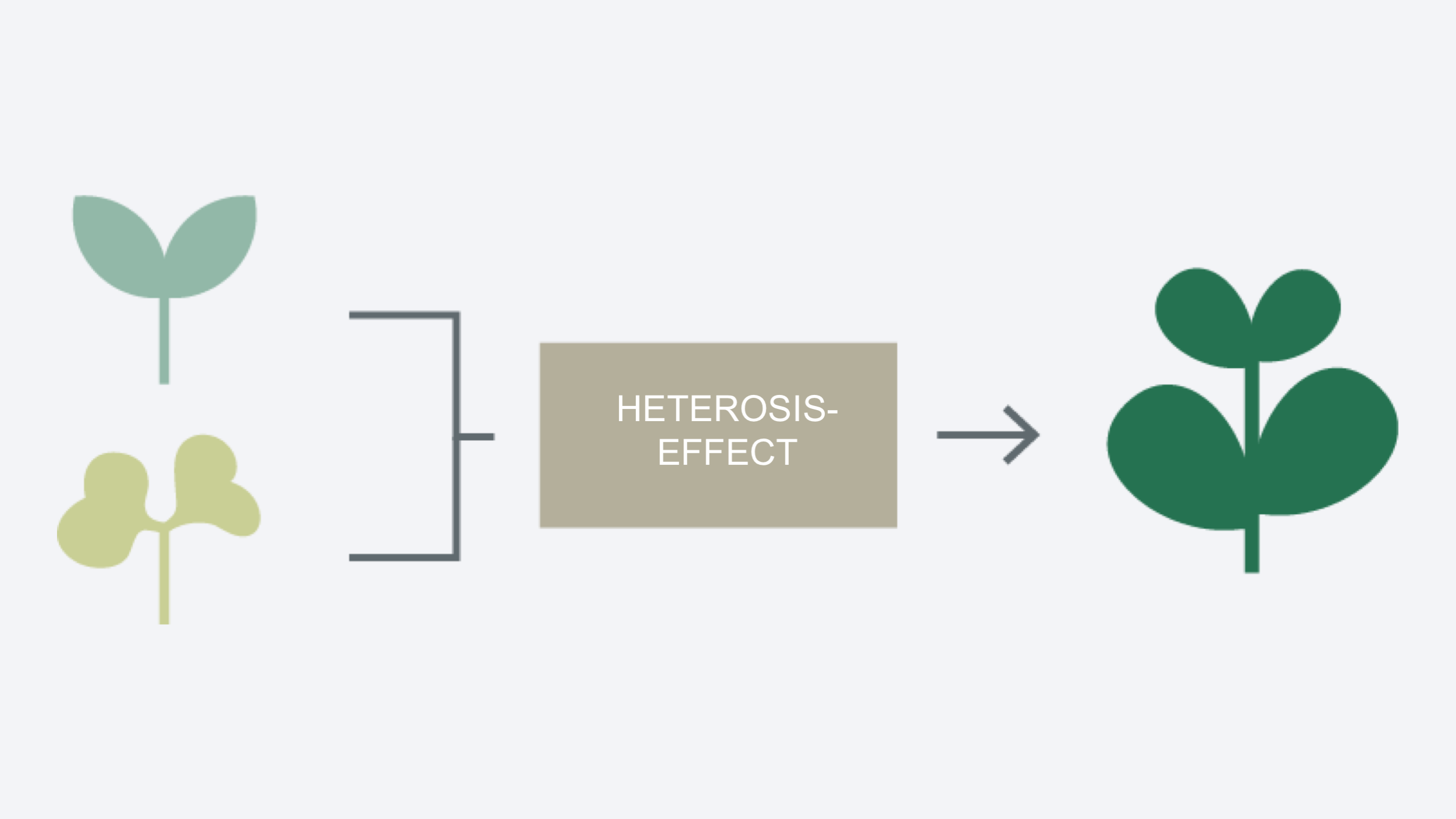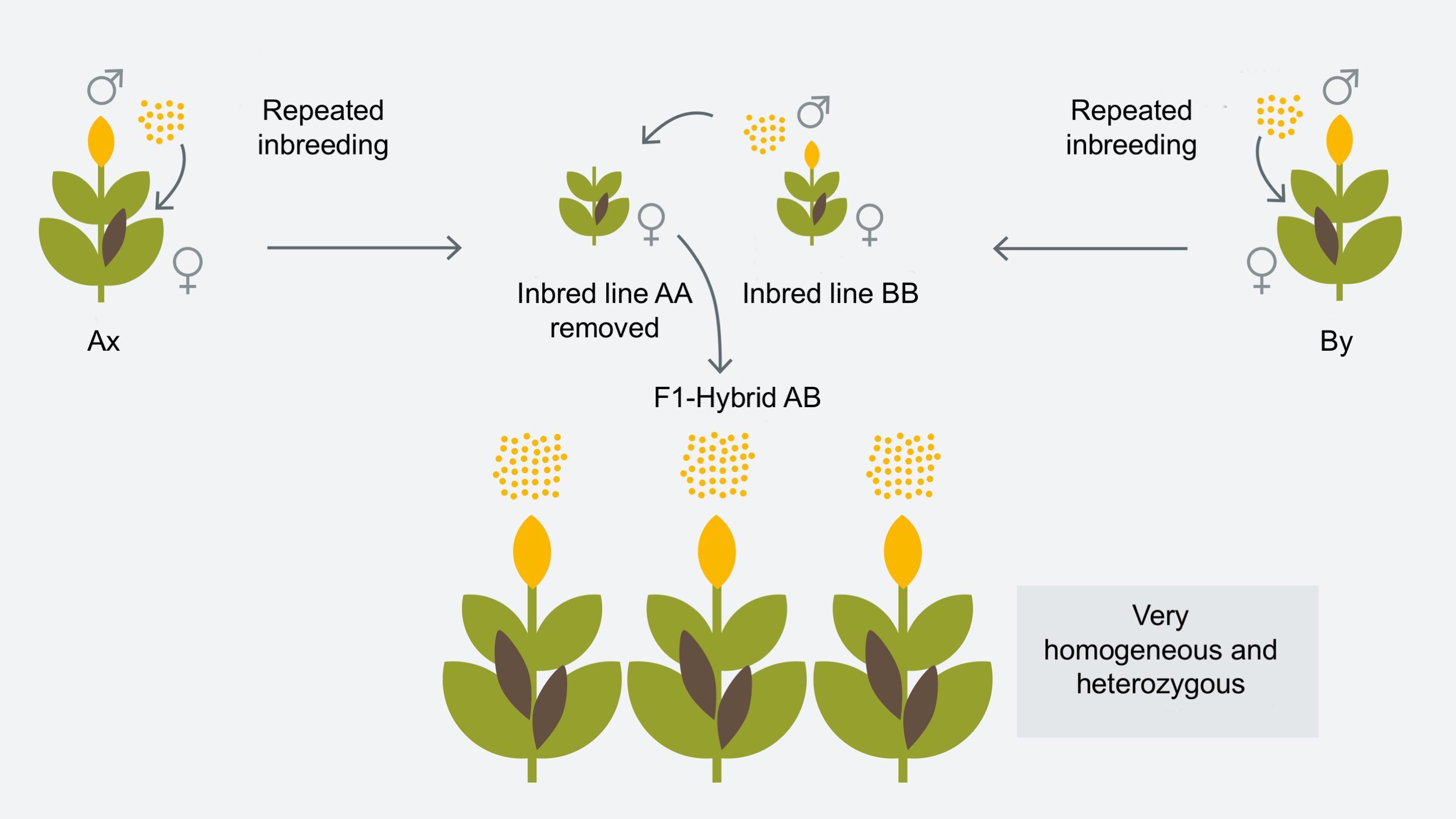Hybrid breeding
Overview
In a nutshell
In hybrid breeding, two genetically different parent lines are crossbred.
Advantages
The offspring (hybrids) are bigger, more fruitful and more resilient than their parental lines (hybrid vigour).
Disadvantages
The heterosis effect is maintained only for one generation.
Development
1920s in the USA
Application at KWS
Breeding of maize, sugarbeets, rapeseed, rye and sunflowers.
An overview of our breeding methods
Your contact



